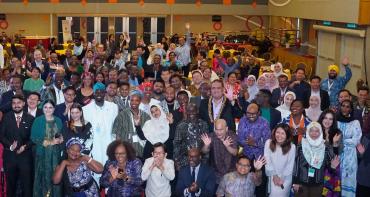The Commonwealth Secretariat’s Youth Development Index ranks 183 countries according to the prospects of young people in employment, education, health, civic and political spheres.

The world’s youth population has never been larger. Those aged 15 to 29 number close to two billion, of whom close to 90% live in developing countries, including many Commonwealth member states.
Thanks to global ageing, the youth population may however be nearing its peak as a proportion of the world’s population.
This throws up a challenge to policy-makers to ensure that today’s huge youth cohort become healthy, educated and productive citizens in society. This is the view of Abhik Sen and Rafiullah Kakar, the co-editors of the Commonwealth Secretariat’s Youth Development Index.
The Youth Development Index ranks 183 countries according to the prospects of young people in employment, education, health, civic and political spheres.
“Demographically speaking, the next couple of decades are a unique window of opportunity,” they write in an article for The Guardian published today.
Mr Sen, Head of Youth Policy and Research, and Mr Kakar, Assistant Research Officer, point to the Youth Development Index as providing clues for policy-makers seeking to create evidence-based, data-driven policy.
Only by acting on the findings thrown up by the index will countries make the most of the ‘demographic dividend’ offered by today’s youth population, they say. “In much of the world, the window of opportunity for converting the youth bulge into a “demographic dividend” will remain open for another few decades at best.”



